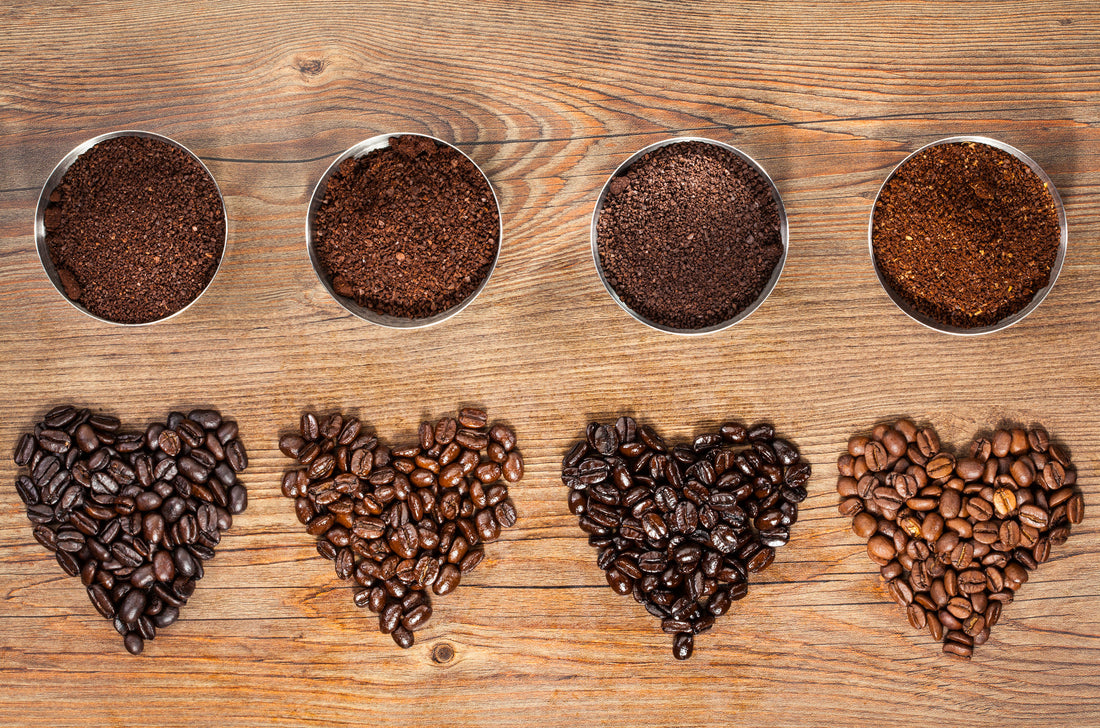Both Dark Roasts and Light Roasts are beloved to coffee lovers around the world, depending on the person’s taste buds and preferences.
The main difference people site between light and dark roasts is that light coffee has more caffeine. This is not fully accurate, though widely believed. Caffeine levels are mostly stable during the roasting process, so the caffeine content is basically the same in both a light and a dark roast coffee.
We’ve compiled a few differences between light and dark roasts that will help you get the most out of your morning cup, depending on what choice you make:
Light Roasts
Light Roasts retain more of the original flavor of the bean, as it’s not roasted for as long of a period. Beans that have been lightly roasted also offer the sipper a more complex tasting experience, often exhibiting traces of sweetness, fruit tanginess, or even a light floral aroma.They are also lighter in the body because the coffee bean has not been roasted long enough to produce caramelized sugars or oil that are associated with dark roasts. If you want a coffee with a more complex taste, the light roast is the way to go.
Dark Roasts
A common misconception about dark roast coffee is that the beans have been burned. In reality, much of the darker, bolder taste comes from the fact that they are roasted for long enough that the oils come out of the beans.When coffee beans are roasted until dark, the bright tones associated with the light roasts tend to disappear. Because of this, the coffee’s original flavors are typically overshadowed by the characteristics of the roasting process. With the right dark roast, beans can develop either sweet or deep taste profiles.
If a bold kick is what you seek in the morning, dark roast would be the choice for you. Dark roasted beans are oilier, which sometimes leads to a bittersweet or toasted taste, as well as decadent chocolate flavor.
Tasting
Tasting carefully is not a subject taught in school (or anywhere, for that matter). Because of this, most of us haven’t developed a palate for taste testing coffee. Below are a few things to keep in mind in terms of tasting in general, and specifically, with coffee.Tasting is always a matter of context. For example, sharp cheddar cheese is sharp in relation to mild cheddar cheese. Stale coffee is dull compared to fresh coffee. It’s also important to remember that people have varying taste buds and preferences (which seems obvious, but worth noting). Just because someone tells you something is the best tasting in the world doesn’t ensure your taste buds will agree.
Let your coffee cool slightly before drinking it. Scalding your taste buds is not the best way to enjoy your coffee or taste the various notes of the cup. Take a moment before you sip to appreciate the aroma of your cup and savor that first taste. It’s also recommended to taste it without cream or sugar first to allow your taste buds to pick out the flavors. Even if that subtle caramel sweetness lasts for only a second, you’ve found a hint of flavor to appreciate and look for in your next sip.
You don't have to be a master coffee roaster to appreciate a good cup of coffee, especially one that's good for you too. Take a minute to reflect which roast you'd like the best so you also can feel like a coffee aficionado!

2 comments
I prefer the lighter roast. I can taste more of the coffee this way and its so GOOD!
Thank you for the education on coffee bean roasting. I have found that I like both light and dark roast especially in the flavored coffees. Thanks again.